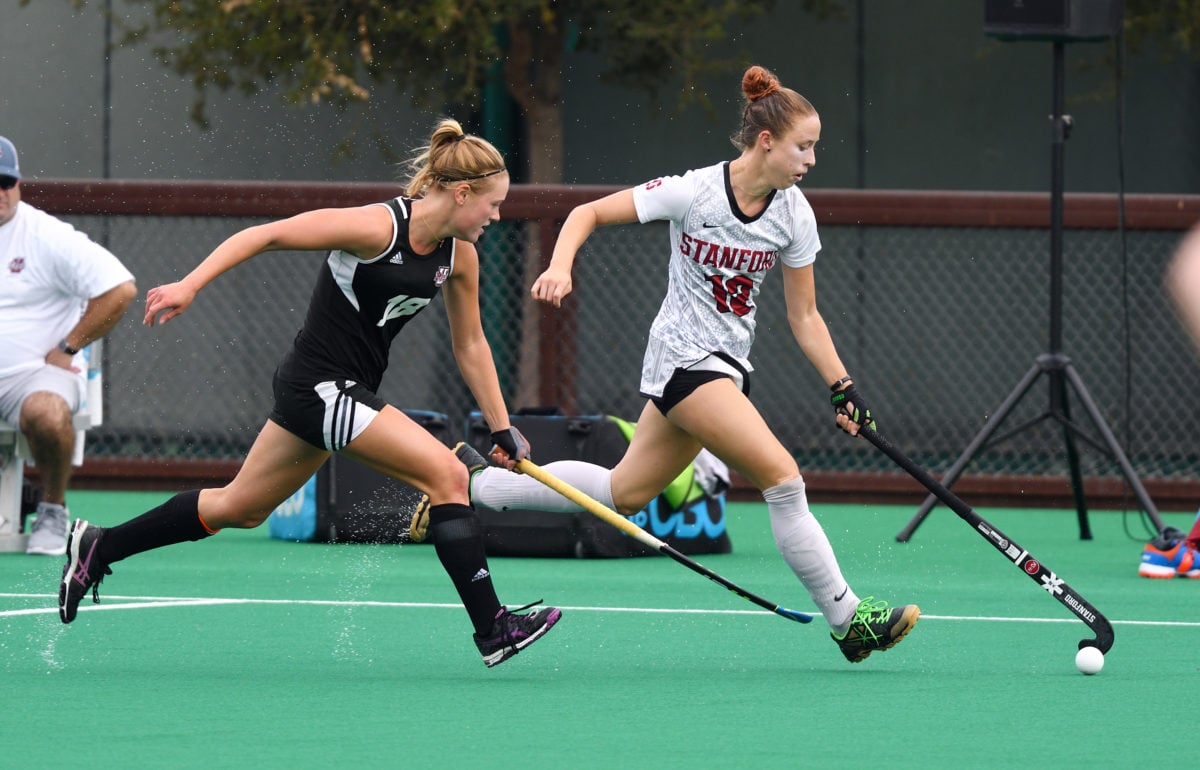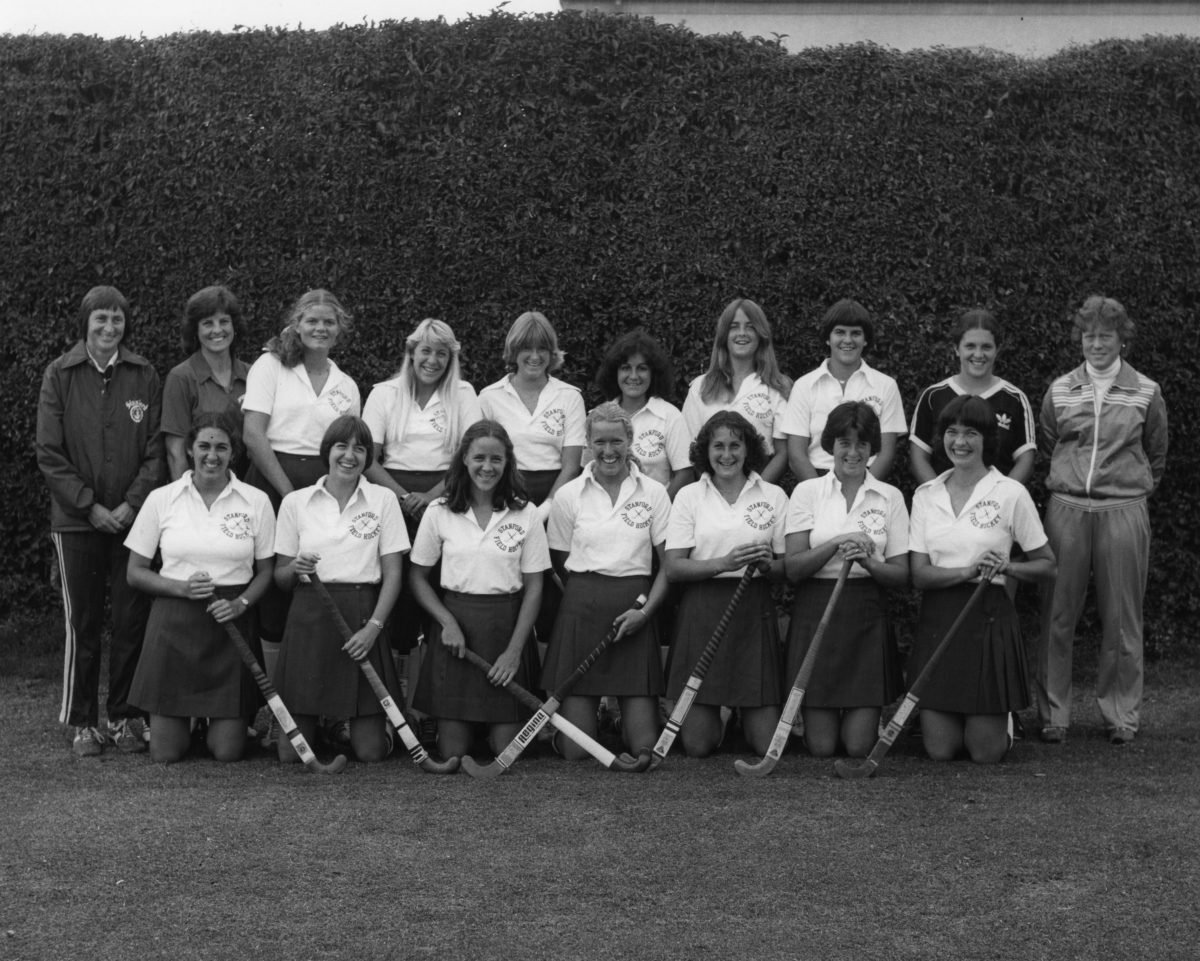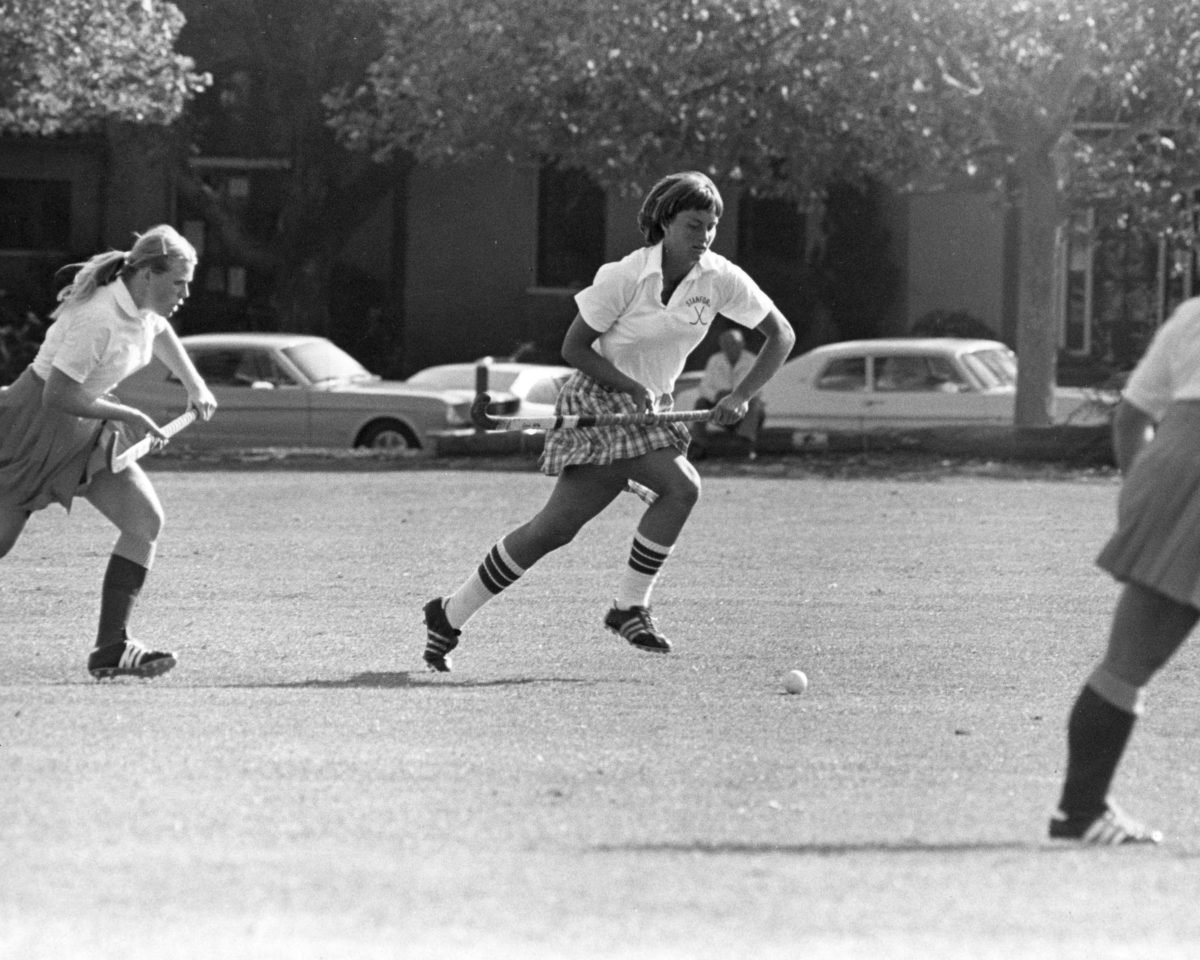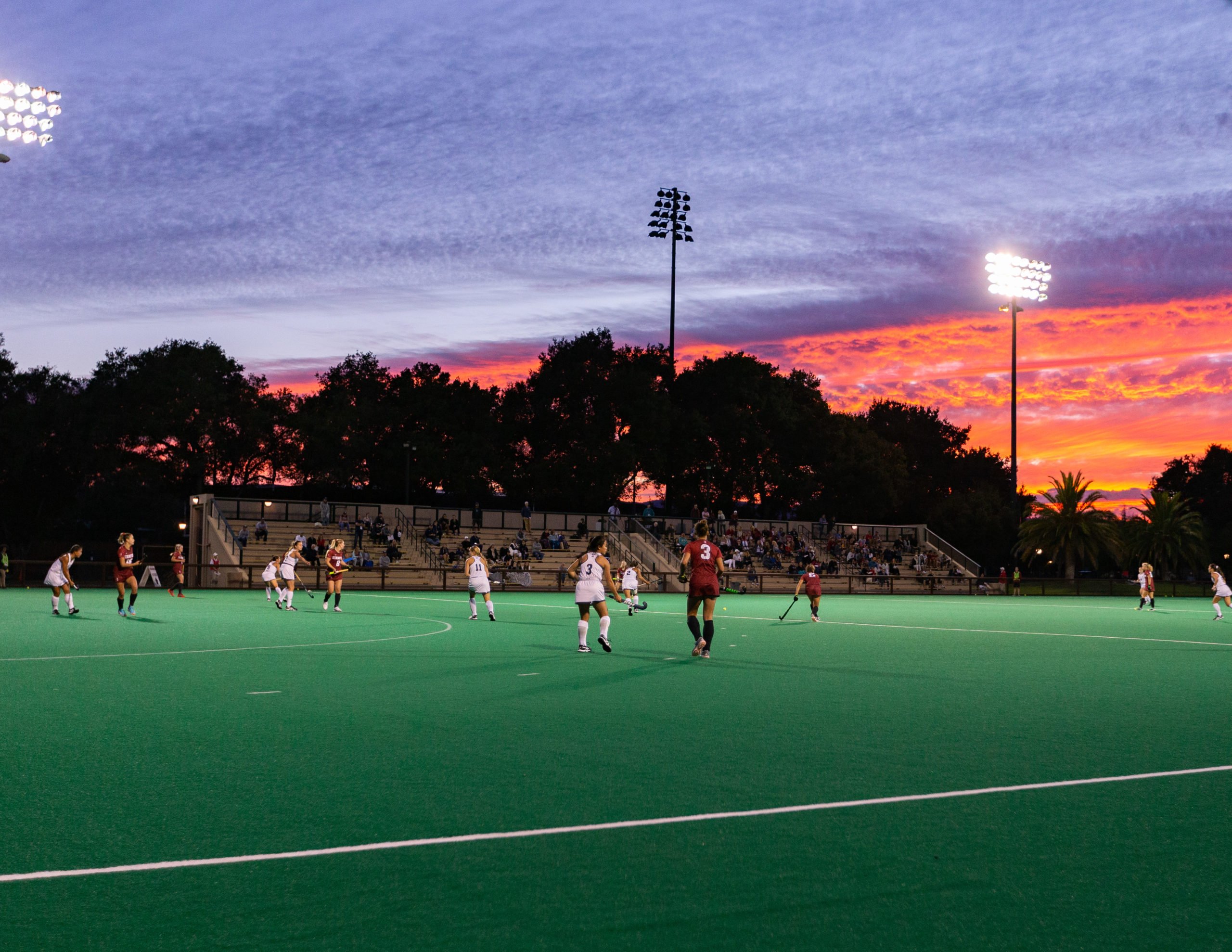“Overtime” is a series documenting the reactions of field hockey alumnae to the University’s announcement on July 8 that Stanford Athletics would discontinue the sport and 10 others after the 2020-2021 academic year. Athletes were notified of the news that morning in a Zoom webinar with Athletic Director Bernard Muir. The field hockey community is currently circulating a petition, which had more than 18,000 signatures at the time of publication, to reinstate the varsity program.
Last season, Stanford field hockey went into overtime in four games. Despite the exhaustion, the Cardinal were victorious twice. As an underdog from the West Coast, the Cardinal upset then-No. 7 Michigan in early September and then beat Maine in a shootout in the American East Conference Semifinals in November.
This perseverance to win and draw out a game is characteristic of the team, who now faces another unexpected obstacle: the team’s impending cut.
2019 was one of the best seasons in history for Stanford field hockey. The Cardinal ended the 16-win season with a loss to No. 1 North Carolina in the NCAA tournament, but they still produced the most program victories since 2014.
The field hockey team was founded in 1903 and is one of the oldest women’s sports on campus. Since its inception over a century ago, the Cardinal have netted 17 NCAA tournament appearances and have won 19 conference championships, including three of the last four.
However, among the University’s listed reasons for the team’s impending cancellation are “incremental investments required to keep or put the sport in a position to achieve competitive excellence on the national level,” “history of the sport at Stanford” and “prospects for future success of the sport at Stanford.”
The reasoning was frustrating for Kelsey Scherer ’15. The former Team USA and Cardinal defender, who competed as Kelsey Harbin, called the reference to the program’s lack of national championship “so insulting to the huge amount of success that that program has had.”
“I am shocked, confused and lost,” said midfielder Fenella Scutt ’22, one of five international athletes on the team. “The deliverance of this news in the middle of a pandemic seemed simply opportunistic of Stanford Athletics, and I am outraged by the fact they put so little consideration into how this affects our lives amidst the many other struggles a college student in this time is facing.”
When asked for further comment, Stanford Athletics referred The Daily back to the original July 8 announcement.
USA Field Hockey also weighed in on Stanford’s decision, releasing a statement expressing disappointment in the decision.
Alumnae, who had no prior knowledge that the cuts were coming, learned of the discontinuation in the same way as the general public: through the University’s official news release and the following social media uproar.
“I could not have been more disappointed nor felt more disrespected by how this was communicated,” said former attacker Kristina Bassi ’17. “People were completely shocked … we did not feel any care or recognition [that the] hours of my life that I gave the school [or] my body that I gave to the school, was respected at all in the communications.”

For Scherer, the initial reaction was shock, too.
“It’s never been a question of whether our program was going to be continued,” she said. “We just got a brand new field, a brand new locker room. We’ve been a winning program for the last [11] years.”
The alumnae, many of whom continue to be involved with the field hockey program, explained that they felt the University’s decision to discontinue 11 sports, and the way it was communicated, was “un-Stanford-like” and departed from the values that they thought the school held.
Scherer compared it to “hearing that a very close personal friend of yours did something completely out of character, and you can’t place how you would know that person and how that would happen at the same time.”
The decision, in their eyes, represented a shift from valuing the students and their sports teams to an emphasis on revenue. It is widely known that the 11 sports generate very limited, if any, revenue for the University.
“They’re not honoring what makes a champion at Stanford and they’re just defining it by what generates revenue now, which is never what I’ve been told,” said Maree Chung ’87.
‘Stanford is a business first’
The University’s official announcement stated that the primary reason for the cuts to all 11 sports is a projected financial shortfall of at least $25 million in the upcoming financial year, stemming from a combination of previous budget deficits and the COVID-19 pandemic.
Alumnae felt that the financial reasoning in particular was “soft” and “not legitimate,” lamenting that the pandemic’s impact seemed to them like the perfect cover up for deeper, pre-existing financial issues.
“It’s sad to say that I’m not surprised, but it became really clear to me as a student and through this pandemic that Stanford is a business first,” Bassi said. “They will do whatever it takes to make sure they are preserving their bottom line. The way that they have treated student organizing, to their frontline staff workers and now non-revenue sports, is all on trend with that. And they’re always going to use financial reasons.”
Another field hockey-specific reason for the cut includes a lack of Division I teams on the West Coast, with Stanford representing one of just three Division I programs in the West.
Scherer and others also indicated that despite field hockey’s lack of prominence on the West Coast, Stanford is in a unique position to spearhead the growth of the sport, given its long history and recent success.
“The reasoning behind it is actually the exact reason they shouldn’t cut the program,” Scherer said.

USA Field Hockey also announced in early 2020 an initiative to grow the sport on the West Coast and in other regions, creating the California State Chapter — at well as chapters in Michigan and Kentucky — to pilot the new program.
“[California] already has a solid field hockey base with more than 30 clubs for boys, girls and adults, over 100 high school programs, three NCAA Division I collegiate programs and eight collegiate club programs,” USA Field Hockey wrote in it’s announcement. “Establishing a California State Chapter will help improve communication and increase support from USA Field Hockey for local competition.”
Alumnae pointed out that the lack of University communication — before, during and after its announcement — is one of the main hindrances as they search for viable solutions to keep the program. Many share the sentiment that, with a willingness from the university to engage, collaborative discussions will lead to their ultimate goal: reinstatement of the team at varsity level.
“At Stanford, we are educated to speak up when we feel that we need to be heard and in a respectful, professional way,” said Christina Williams Harding ’03 M.S. ’04. “I think there are avenues to share our voice, and to share ideas and to work with the university. [There is] just a determination when you hear a ‘no’ or when you aren’t able to get to your goal. You keep working towards it.”
No stranger to adversity
Impending cuts to their sport are nothing new for the Cardinal field hockey players. Former Athletic Director Andy Geiger announced in February 1990 that the sport would lose its varsity status in 1991.
University financial support had been waning slowly since 1986, when the Athletic Department slashed the team’s budget from $25,000 to $5,000. To keep the program alive, the team relied on philanthropic support for funding, while current athletes also chipped in to help the team with its expenses by working for the Athletic Department. Four years later in 1990, the team was the first that the Department announced it would cut as the University searched for ways to reduce their expected $1 billion budget deficit.
However, the Athletics Department announced a caveat along with the news of the looming demotion: the team would continue to be recognized as a varsity sport and would be allowed to travel to the NCAA regional tournament, if it won its conference in 1990. Playing with a chip on its shoulder, the team won the NorPac Conference (now defunct) in both 1990 and 1991 — appearing in the NCAA tournament those years as well. Despite field hockey’s success, the University did not commit to fully funding the team for nearly 15 more years, leading players to work for the athletics department to raise sufficient funds for the team.
“In the past, in the ‘80s when I played, we were a good team — but we had to fundraise a lot,” Chung said. “We would pick up trash after the football games in the stadium and in the surrounding area to raise funds to have a travel budget to go east.”
Williams Harding remembered working at the men’s and women’s basketball games and various football games to raise needed team funds.
“That was a long-standing tradition of the Stanford field hockey program,” the former midfielder said. “We were happy to give back to the athletic department, as a way to keep our operating expenses low and to continue playing at the varsity NCAA Division I level.”
For subsequent players, the stories of past perseverance and ability to overcome financial challenges served as motivation.
“[The team] took huge cuts to all their gear, all their expenses, they rented vans to get themselves to games because they just wanted to play,” Bassi said.

According to Williams Harding and other players, the program finally became fully funded by the University during the 2006-2007 academic year when it was given a full allotment of scholarships and a full-time, paid assistant coach position, and players were no longer required to work for the athletics department.
Now, however, that funding has come to a screeching halt.
The team will have one final fully-funded season as a varsity program in spring 2021. Due to the pandemic, the American East Conference, Stanford’s field hockey conference, announced that all fall sports will be postponed until spring.
Another aspect hindering alumnae efforts to retain varsity status, Stanford has indicated that even if donors stepped forward to fund the team, the decision to demote the field hockey team is “final” and that the philanthropic interest should be directed towards supporting the sport at a club level.
One thing is certain: if the decision is indeed final, it will not be due to a lack of effort from current players, alumnae and others from the broader field hockey community.
“I would rather roll over and die,” Scherer said, “before I don’t work as hard as I can to give the girls underneath me that same experience.”
Contact Sofia Scekic at sscekic ‘at’ stanford.edu and Mary Lee at marylee1099 ‘at’ gmail.com.
